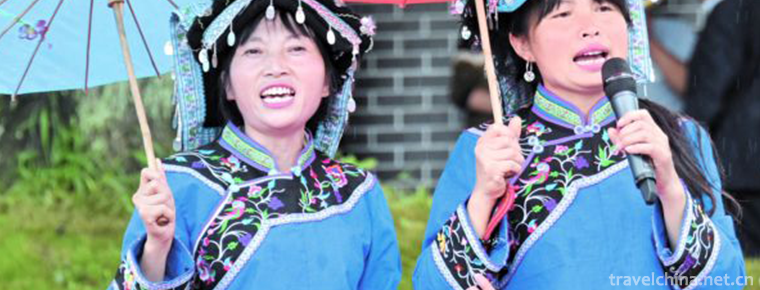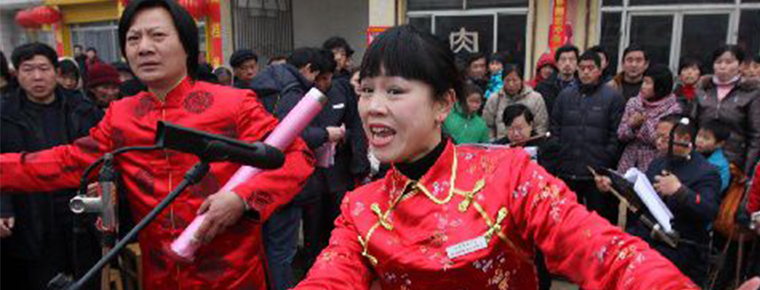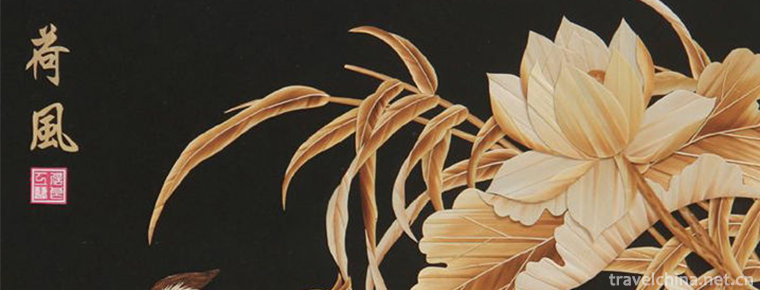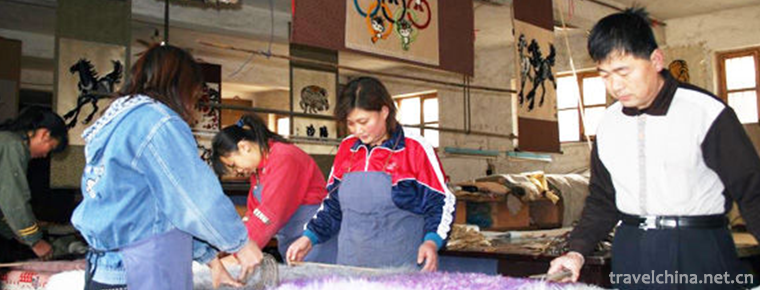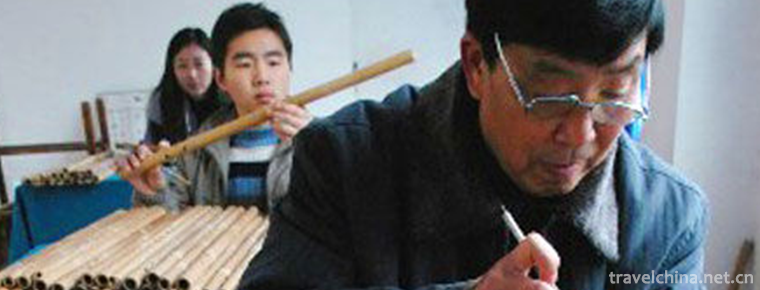virtuous and filial
virtuous and filial
Xianxiao in Xining, Liangzhou and Hezhou generally refer to Xianxiao. Xianxiao in Xining is a folk rap art which is popular in Hehuang area of Eastern Qinghai Province.
Xianxiao was born out of Buddhist folklore, and has a deep relationship with Xiliangle music, Dunhuang Bianwen and Hexi Baojuan. The way of inheritance mainly depends on the artistic population. Its content mainly focuses on stories of heroes, loyal ministers and good generals, filial piety and virtuous women. It enlightens people to "live a good life and do filial piety at home", so it is called "virtuous and filial piety".
On May 20, 2006, "Xianxiao" was included in the list of the first national intangible cultural heritage in China.
Xianxiao in Xining was listed on the national intangible cultural heritage list in 2008. In order to protect this form of folk art effectively, on September 24, 2008, Xining Municipal Mass Art Museum established a base for inheriting Xianxiao in Landscape Primary School of Datong Hui and Tu Autonomous County.
Historical Origin
Treasure Volume Background
Baojuan is a combination of language and writing.
Popular literature, history, religion and other contents of the art treasure house, it is in religious and folk belief activities, according to a certain ritual singing text. Baojuan originated from the "vulgar speaking" of Buddhism in the Tang Dynasty. Afterwards, it was influenced by the Sutras of the Song Dynasty, the tunes of various palaces and the words of drums. It was named Baojuan at the end of Yuan Dynasty and the beginning of Ming Dynasty. Baojuan aims at propagating karma and spiritual retribution. It has strong religious color. It is still sung in contemporary Hexi, Jiangsu and Zhejiang provinces. It has become the standard of people's speech and morality, and shows its unique educational role. Folk treasure rolls are a kind of intangible cultural heritage.
1. Origin of Baojuan
One of the viewpoints is that Baojuan is "the descendants of the descendants of the Beiwen" and an alias for "Tan Jing et al."
Dunhuang Tibetan Jingdong's rap volumes can be divided into variants, popular speeches, scripts, Fu and so on, but these rap forms are different in cultural background, singing form, text form and so on.
Opinion II:
Which of the above-mentioned forms of rap is Baojuan the "descendants of descendants"?
Viewpoint 3: Baojuan has nothing to do with the Sutra Speaking in the Wazi of Southern Song Dynasty, but originated from the "vulgar speaking" of Buddhism in Tang Dynasty. It is a record text of rap and singing activities in accordance with strict rituals in religious activities.
Viewpoint 4: Baojuan is a moral textbook of folk customs and norms.
Viewpoint 5: Baojuan originates from folk literature and folk art, and plays an important role in cultural inheritance.
2. Baojuan and Novels
The similarity and consistency of narrative between Baojuan and the novel will influence, transform and inherit each other.
3. Baojuan and Bianwen
Treasure scrolls are often regarded as the descendants of the literary variants because of their similarities in performance and text, but we should also see the unique features of Treasure scrolls in the literary variants and the diversity of their origins. Baojuan has an important position in the history of Chinese popular literature and its influence on other literary styles.
4. The relationship between Baojuan and other forms of rap
Some forms of rap, such as storytelling and good books, have something in common with Baojuan's singing, but they are different.
5. Baojuan and Political Culture
Folk treasure rolls are closely related to political culture in content. The proverb of "official" reflects the people's understanding of politics and their attitude towards power, as well as their complex mentality and contradictory feelings when facing power.
6. Baojuan and Religious Belief
As a way of spreading religious thoughts, Baojuan began to integrate with folk religions at least in the early Ming Dynasty.
7. Baojuan and Musical Aesthetics
The aesthetic concept, taste and function of Baojuan are closely related to music aesthetics. Bao Bao reflects not only local customs and customs, but also the essence of Chinese traditional culture, especially in music aesthetics.
8. Baojuan and Female Literature
The special status of women in the trend of the times determines the enduring of female literature and becomes another angle of study. Like literary and artistic forms such as novels, poems and dramas, Baojuan can also extract and analyze the unique female images, thus giving people a glimpse of the historical evolution of the female images, women's status and folk beliefs in Baojuan's creation period.
Humanistic Background
As early as Qin Shihuang built the Great Wall, "Xianxiao" had been singing. At that time, many men were captured to build cities, and the blind artists were not spared. They sang "virtuous and filial piety" to the workers who had a rest every day, which made them forget their extreme fatigue and accelerated the speed of building the Great Wall. In Tian Rucheng's "West Lake Tour Zhiyu" in the Ming Dynasty, "Hangzhou men and women, learn more about pipa, sing ancient and modern novels, comment, in order to find food and clothing, it is called Taozhen. Generally speaking, the description of Song Dynasty's current affairs and Gai Bian Jing's legacy is basically the same as that of Hezhou Xianxiao's singing form. It can be seen that the spreading process of virtuous filial piety is very long.
Liangzhou Xianxiao
The earliest record of "Liangzhou Xianxiao" in the existing literature can be seen from the Ming Dynasty (1368-1644). The origin of "Liangzhou Xianxiao" is closely related to the prosperity of "Xiliang Culture" in history.
Wuwei City "Peaceful Settlement Incident": Xixia is a multi-ethnic separatist regime with Dangxiang Qiang people as the main body. Its name is Daxia (also known as Miyao and Dabaigao). Because it is located in the northwest, it is called Xixia in history. Western Xia has a vast territory, bordering Xiaoguan in the south, desert in the north, Yellow River in the East and Yumen in the west. The territory includes Gansu, Ningxia, Shaanxi, Inner Mongolia and Qinghai today. In the first year of Song Baoyuan (1038), Li Yuanhao officially established the Daxia State. He was crowned emperor in Xingqing Prefecture (Yinchuan), thus paving the way for the great achievements of Xixia State in Hexi region in 190 years. But Li Yuanhao was Emperor for only 11 years, and later passed on to his son and grandson. After many years of dynastic change, in the twelfth year of Xixia Qing (1205), the Mongolians rose up in Mobei, and Tiemuzhen invaded and plundered Xixia. Soon after, Tiemuzhen unified Mongolia and called it Genghis Khan. He expelled Xixia in the second year of Xixia (1207). In the four years of Qianding (1226), Genghis Khan attacked the Western Xia Dynasty in a large scale, driving all the way straight into Heishui City, Suzhou, Ganzhou and so on. Mongol soldiers crossed the desert, all the way to the western towns of the blood-edged river. The Xixia nationality was massacred by extinction. Art and culture everywhere suffered devastating destruction. When Mongolian soldiers were under the city of Xiliangfu, they were regarded as an ominous omen because of the loss and injury of the commander in the first battle. So the Mongols proposed to the guardian of Xiliangfu that they were willing to settle peacefully. Thus, after peace talks between the two sides, Xiliangfu was peacefully settled and the people in the city were spared from slaughter.
The Dangxiang Qiang people are warlike and militant, and men and women are the same. For example, when Li Yuanhao, the founding emperor, fought, he was "daring to be the first generals". The Empress Dowager did not have the Tibetan family, Liang family and so on. She led the army to fight with the Song Dynasty many times. Dangxiang Qiang people are good at riding and shooting. They can walk a hundred miles, and they can travel thousands of miles without delay. If they fly in the clouds by electric shocks. Even if they are captured by the enemy and the enemy cuts off the flesh of the other party, the Dangxiangqiang people will never ask for mercy or cry out for pain. The men of the Dangxiangqiang people will become strong men at the age of 15, participate in army training and be ready to participate in war at any time. Therefore, men and women of the Dangxiangqiang people have been nurtured and trained by the spirit of martial worship since childhood. Everyone is brave and the whole people are soldiers.
After the brave and warlike Party Xiang Qiang people emerged from the rest of the nation, they fought all the way to establish the Great Summer Kingdom. After the founding of the Great Xia State, the people in power were not satisfied with the life of emperor in the northwest of the poverty ridge. They also aimed at launching the war of invasion of Song Dynasty and the war of Xia and Liao Dynasty. Moreover, as far as the State of Xia was concerned, the court struggle was quite fierce, and the phenomenon of empowerment of the post-Party was prevalent. Under the circumstances of frequent wars and turbulent domestic situation, most of the people of Xixia did not receive cultural education. Therefore, Li Yuanhao and Renxiao, the rulers of that time, also recognized this problem. They vigorously pursued the Han rites, "governing the country with Confucianism", established the "sinology" and trained the talents who governed the country with "Confucianism" in order to achieve the goal of long-term rule and feudalization.
The Art of Trichord Playing and Singing
Three strings originated from five strings and seven strings, which belonged to the creation of Xixia Dynasty.
The Xixia dictionary also has a record of Sanxian, that is, Sanxian is annotated as "Sanglanger" with Xixia pronunciation, while Chinese character is annotated as "Sanxian". Xianxiao's rap and singing art is accompanied by three strings, so some people also interpret Xianxiao as "Xianxiao".
Xia Dade died in 1139 and his eldest son Renxiao succeeded him. At that time, Daxia encountered unprecedented natural disasters such as earthquakes and famines. It strengthened the determination of Emperor Renxiao to develop, reform and strengthen the country. Ren Xiao ordered schools to be set up in various prefectures and counties so that children of all families could go to school and read Confucianism and Mencius. At the same time, we have established the "Singing Family Law" to teach and encourage our children to establish virtue, read the Sutra of Filial Piety, set up internal learning, and encourage "Singing Family, Saying Filial Piety" and "Singing Family Law".
It was through respecting Confucianism, conducting Sinology and singing poems, publishing Confucian books and publicizing the Book of Filial Piety that the Confucian culture of the Han Dynasty, Confucianism and Mencius, deepened in the Western Xia regime and bureaucratic stratum, and formed a good social atmosphere of everyone's filial piety, virtue, loyalty, filial piety and respect for the elderly throughout the country. Not only was the fashion of singing virtuous and filial piety prevalent at that time, but also the voice of saying virtuous and singing filial piety was welcomed everywhere.
The accompaniment instruments for singing Xianxiao originally included five-stringed piano, erhu and other percussion instruments. Later, according to practical needs, the imitation of the five-stringed piano created three strings, which became the main accompaniment instrument of virtuous and filial piety. Before the Western Xia Dynasty, there was no such instrument. With the emergence of virtuous and filial piety, the three strings were born. This is a great invention of Liangzhou people.
Among the twenty-four filial piety stories, Ding Lang's carved mother, Mulian monk's rescue mother, White Parrot Pirate Peach, Guo Ju buried son, Three Girls'share of wealth, Three Girls' worship of life, Ren Cang buried mother, Little Aunt Xian, Hill-splitting rescue mother, Cutting flesh and serving relatives (also known as "Selling Miaolang"), and so on. Most of these oral stories of filial piety are related to Dunhuang documents and ancient Liangzhou territory. The excavated tomb brick carvings or paintings of the "twenty-four filial piety" characters, story plots and so on coincide. This shows that the so-called "twenty-four filial piety" series of filial piety stories in virtuous and filial piety do not originate from books, but from oral stories circulated in ancient Liangzhou. They have a direct relationship with Dunhuang's singing literature. They are the direct inheritance and development of the filial piety stories in Dunhuang's singing literature, and they are constantly processed and created in the long-term oral transmission process to form a strong Liangzhou place. Characteristic Xianxiao repertoire.
"Blind String"
"Blind String" is also called "Blind Immortal" or "Blind Mr. Liangzhou's content of virtuous filial piety mainly focuses on the stories of heroes, martyrs and ladies, filial sons and grandchildren, emperors and generals, and gifted and beautiful women. It contains the tenets of hiding evil and promoting good, persuading the world by describing time, retribution for cause and effect, and filial piety for virtue and virtue, so it is called "virtuous filial piety".
Xianxiao is widely spread in Liangzhou city and countryside and adjacent places such as Gulang, Jinchang, Zhangye and Jiuquan. It is generally taught by artists from mentors to apprentices. Most of the artists engaged in Liangzhou Xianxiao singing career are blind, especially the congenitally blind. In order to make a living, some blind children learn art from teachers when they are young, and then they go to villages and sell songs everywhere. Locals call them "blind strings".
Hezhou Xianxiao
"Hezhou Xianxiao" is a narrative folk rap music form which combines Hezhou dialect with simple plucked music. It has a long history, rich connotation, or eulogize or persuade people, or tell people something about it. It is composed of three strings by the blind artists of the Han nationality, playing and singing by themselves. As early as the mid-Ming Dynasty, it has become one of the local people's favorite art forms. Hezhou Xianxiao sang for one or two people, playing three-string accompaniment, and later developed into a form of accompaniment with small folk bands. It spread in Linxia, Gansu Province, and is a kind of local folk art in Northwest China. When singing in leisure and entertainment, blind artists walk through the streets and perform in tea gardens, wine shops, temple fairs and other occasions. Local people call it Hezhou Playing and Singing, Hezhou Singing Book, etc.
Hezhou Xianxiao's music tone is euphemistic, sad and sad because of its inheritor's special identity and content, which not only depends on the content of singing, but also reflects the experience of blind artists'inner feelings. From the psychological point of view, both singers and listeners of Hezhou Xianxiao are more likely to grasp the content of music than the music itself, so they have a strong amateur and self-entertainment. Its singing scripts first depict the characters in tone, intonation, words and sentences, reveal the plot of the story, and on this basis, use music to highlight and exaggerate the performance of language. The main function of music is to properly render and embellish the interest of the lyrics in order to deepen the expression and memory of the lyrics.
With the continuous development of Hezhou virtuous and filial piety, it has formed a deep mass base. It is widely sung in Gansu and Qinghai provinces. It is deeply loved by the Han, Hui, Dongxiang, Baoan, Sarah, Tu, Tibet and other ethnic groups. It is an art form that the masses of these areas like to hear and hear. Hezhou Xianxiao sings in the Han language. Because of the different mastery and application of the four tones in Chinese, it naturally affects the performance of the tune and produces different singing effects and a unique tone. It is not only a pure art form for the masses to appreciate and entertain, but also plays a better role in propaganda and education by chanting Chinese traditional civilization, historical events and social virtues to people in different historical periods. In the course of its long-term accumulation of music culture, it has established a deep relationship with folk songs, which shows its unique form and genre, as well as its flexible development in music structure, melody and rhythm changes in order to meet the needs of singing stories.
Hezhou is the old name of Linxia. In the long years of blind artists carrying three strings behind their backs, traveling from east to west and making a living by selling art, Hezhou virtuous and filial piety has been continuously developing and improving, and has become an important part of the cultural life of the people of all nationalities. Many illiterate people just know the book and the rites from the "virtuous and filial piety" and "know the past and the present". At the end of the Qing Dynasty and the beginning of the Republic of China, Hezhou blind artists Kang Shangde, Chen Deming, Wang Youlu and Li Yinwa, with their unique skills, went to Lanzhou, Xining and Xinjiang for many times to set up stalls to sing, collect apprentices and pass on art, and spread Hezhou Xianxiao widely to the above places.
There are many traditional singing books of Hezhou Xianxiao, most of which are compiled and sung by artists according to books and handed down from generation to generation. They call the song books that express the rise and fall of the country and loyal ministers and generals "Guoshu", such as "Wu Zixu Crossing the River", "Romance of the Three Kingdoms", "Xue Rengui Zhengdong", "Journey to the West" and "Baogong Case". Most of them are long books, often in fixed tea shops, singing in people's homes, often up to half a month. In order to enhance the performance effect, there are also two performers playing different roles, using four-hu and three-string pairs to perform. Singing reflecting filial piety to parents and love between men and women in daily life is called "family book". For example, "Meng Song Crying Bamboo" and other twenty-four filial stories, as well as "Flower Pavilion Meeting" and "Mouse Sue Cat" are called small books, full of interest. Generally in the short-term village, street stalls when singing, recreation, leisure people are moved by the story of its collection. Blind artists also timely reflect the major social events they experienced. Their compilation and singing of "Old Sarah" and "Commander Dahe Zhou" spread widely. Although there are some biases, they still have certain reference value for understanding the situation at that time.
The language of "virtuous and filial piety" is rooted in the fertile soil of "Hezhou dialect". It is humorous and popular. The number of words in the lyrics is flexible and changeable. Seven or cross are the most common words, but there are also four or five or more words. The complexity of the plot often makes the number of paused sentences different. The impromptu increase or decrease of the number of words and sentences is a major feature. The tone of "virtuous and filial piety" is a combination of songs and cards. The chanting voice "narration" is the basic tone for narrating stories; the sobbing voice often appears at the same time as the sad tears of the characters in the book; the warm and lively "exaggeration tone" renders the festive scene of "the imperial roll gets its name and the happy event comes"; and the powerful "wuyin" makes the listeners stay on the ancient battlefield of the sword and light shadow. As an accompaniment instrument, the three strings, roll, play and encourage, smooth and rub the heart, and subtly set off the various emotions expressed in the singing, which is often amazing.
Xianxiao in Xining
"Xianxiao in Xining" is a folk rap art spread in the Hehuang area of Qinghai Province. Most of the content is to persuade people. "Xianxiao in Xining" is popular in the Huangshui River basin of Eastern Qinghai, and blind artists sing the most.
According to the New Records of Xining Fu, in 1400 AD, Vice-Minister Ke Zhong, a military officer in Xining, set up a charity nursing home on the North Street of the city, where blind people taught singing.
In September 1949, Xining People's Broadcasting Station began broadcasting. The songs of Xianxiao and Xiaoxiao in Xining were frequently broadcasted. On September 26, 1949, the People's Military and Political Commission of Qinghai Province was established. The Cultural and Educational Department of the Military and Political Commission convened a meeting of opera artists in Xining. The director of the Cultural and Educational Department made a speech entitled "Quyi and the People", asking the artists to turn over and distribute subsidy to the artists on behalf of the Military and Political Commission. In the winter of 1949, Chinese governments at all levels registered professional or semi-professional performers and began to resettle and relieve their lives.
In February 1958, the Civil Affairs Department of Qinghai Province, with the support of the China Blind Welfare Association, held a one-year training course for the blind in Qinghai Province. A group of blind artists, including Xining Xianxiao artists, were organized to learn the basic knowledge of Braille, music theory and musical instrument performance. Liu Yanbiao learned Braille and Braille in this class, and later became an all-round artist of creation, performance and accompaniment.
The inheritance of Xianxiao in Xining is non-family. Especially in the 1920s and 1950s, most of the Xianxiao artists in Xining studied it as a means of livelihood because of their poor family and their own eye diseases. Especially in the Ming and Qing Dynasties, Xining had a government-run social place for the disabled and widows, widows and widows, also known as the Old Orphanage, where many folk artists lived and the best place for the blind to learn art. Artists should first ask the guarantor, who assures the master that the learner is responsible for his illness and accident during the period of learning art, and so on. This kind of teacher-to-student relationship is more strict, and it is not allowed to "cross-talk". The disciple will invite his brothers and sisters to have dinner and singing. The qualified person will be transferred to the street the next day.
artistic value
Xianxiao is one of the carriers of Chinese folk hidden culture. As a hidden culture, it can show many authentic things of culture from the folk perspective, and truly reflect the panorama of history and culture. From virtue and filial piety, it reflects the rich folk culture in Western China. Filial piety is a typical art of the people, or can be called "the art of the people". Its content, form and stand spirit are closely related to the fate of the people. It records the lives, hardships, dreams and pursuits of the local people for thousands of years. The most praiseworthy of virtue and filial piety is not only the description of suffering, but also the feeling of great compassion for suffering. Its form and spirit all have a kind of Buddhist advocacy of "great mercy without cause" and "great compassion with one body".
—— Xue Mo (First-Class Chinese Writer)

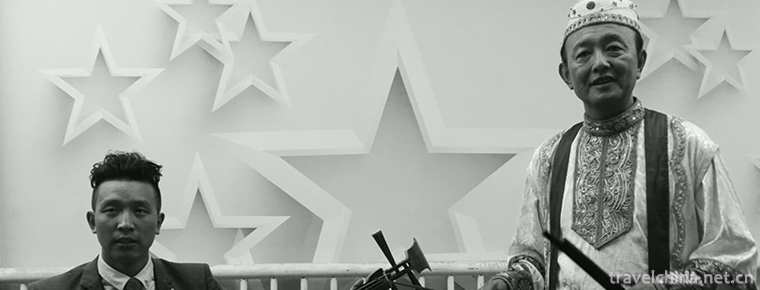
-
Huangguoshu Waterfalls Scenic Area
Huangguoshu Scenic Spot is a key national scenic spot, located in southwest Guizhou Province, 128 kilometers away from Guiyang City, the capital of Guizhou Province.
Views: 166 Time 2018-12-12 -
Shennong Mountain Scenic Area
Shennong Mountain Scenic Area is a national AAAAA-level tourist area, located in Zhaozhai Village, Ziling Town, Qinyang City, Jiaozuo City, Henan Province, 25 kilometers northwest of the Taihang Mount.
Views: 212 Time 2018-12-17 -
Buyi Chabai Song Festival
The Buyi Chabaige Festival is a commemorative festival of the Buyi people in Xingyi, southwest Guizhou Province. It is held in Chabaichang, Dingxiao Town, Xingyi City.
Views: 152 Time 2019-04-04 -
Acrobatics in Dongbeizhuang
Dongbeizhuang acrobatics is a traditional folk acrobatics in Puyang City. Dongbeizhuang, Yuecun Township in Puyang City, is a pearl in the vast plain of northern Henan Province.
Views: 111 Time 2019-04-27 -
Diabolo
Diabolo is a splendid flower in Chinese traditional culture garden. Diabolo used to be called "Hu Dao", also known as "ground bell", "empty bell", "wind gourd"..
Views: 133 Time 2019-04-28 -
Hu Ji Shu Hui
Hu Jishu Fair is a traditional folk art fair that rose and took root in Huji Town, Huimin County, Shandong Province. Huji is the largest market town in the southeast of Huimin County.
Views: 96 Time 2019-05-03 -
Wheat straw cut and paste
Straw clipping is a traditional folk handicraft. Also known as "wheat straw clipping", "wheat straw clipping". Using the natural luster of wheat straw and the characteristics of ru.
Views: 220 Time 2019-05-16 -
Min Opera Fujian Opera
Fujian Opera is the only existing opera that sings and reads Bai in Fuzhou dialect. It is prevalent in central Fujian, Eastern Fujian and Northern Fujian, and spread to Taiwan and Southeast Asia. It i.
Views: 147 Time 2019-06-05 -
Tanning Technology of Tan Sheepskin
Tanning process of Tan sheepskin in Jiaocheng County is relatively complex, totally depending on manual operation. There are more than 20 processes such as washing, soaking, drying, shoveling, nailing.
Views: 261 Time 2019-06-18 -
Yao Peoples Playing Hall
The Playing Hall is a folk grand gathering of memorizing ancestors, recalling history, celebrating harvest, rewarding vows, disseminating knowledge and mass entertainment activities in Liannan Paiyao..
Views: 286 Time 2019-07-11 -
Production Techniques of Yuping Xiaodi
Yuping Xiaodi is made of a special bamboo as raw material through four processes: material taking, blank making, carving and finished product. The manufacturing process is complex and all of them are .
Views: 153 Time 2019-07-16



